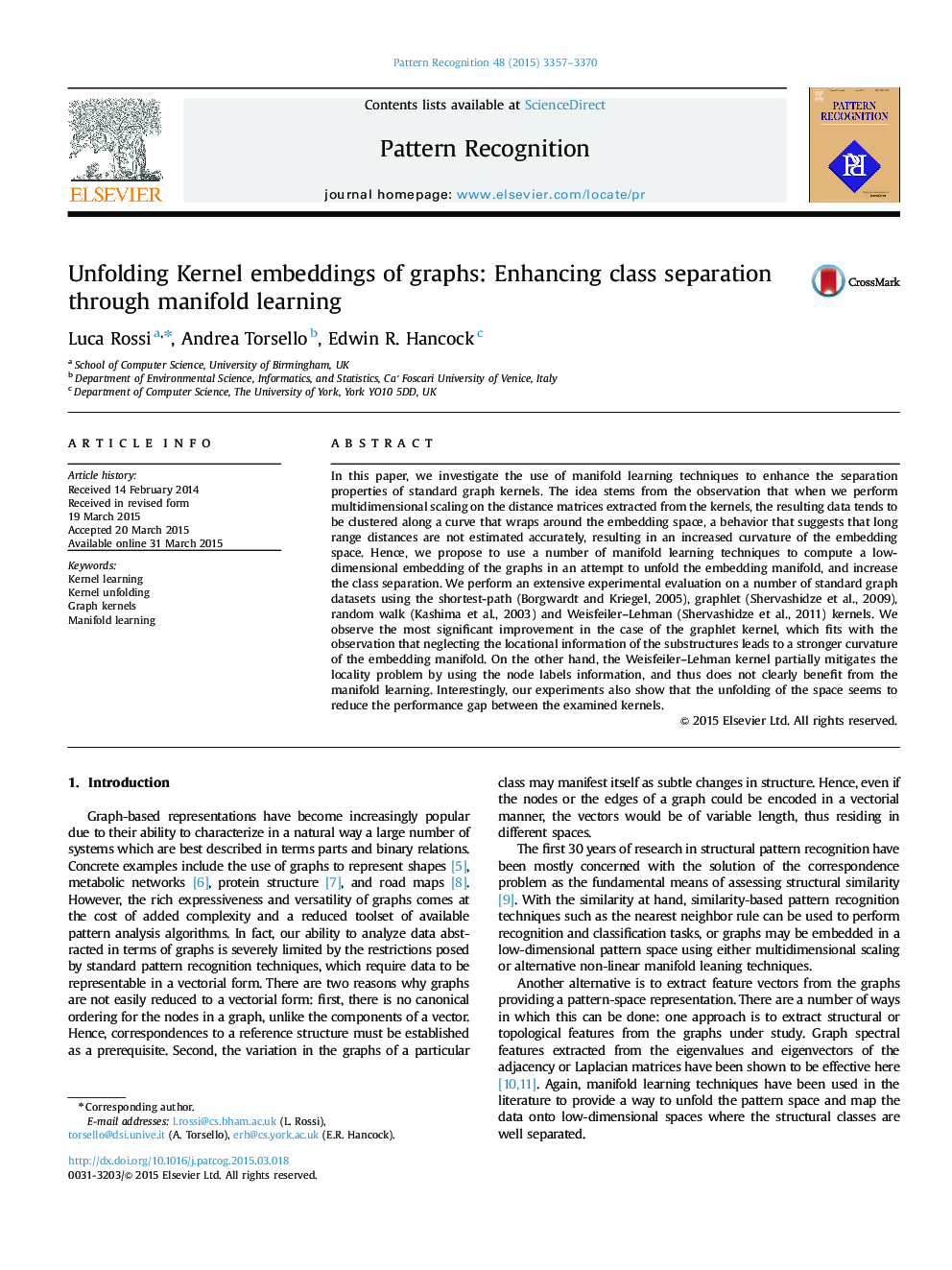| Article ID | Journal | Published Year | Pages | File Type |
|---|---|---|---|---|
| 529861 | Pattern Recognition | 2015 | 14 Pages |
•We use manifold learning techniques to enhance the performance of graph kernels.•We try to increase the class separation by unfolding the embedding manifold.•We propose a procedure to find the optimal embedding of the data.•The kernels which neglect the locational information show the largest improvement.•The unfolding of the space helps to reduce the performance gap between the kernels.
In this paper, we investigate the use of manifold learning techniques to enhance the separation properties of standard graph kernels. The idea stems from the observation that when we perform multidimensional scaling on the distance matrices extracted from the kernels, the resulting data tends to be clustered along a curve that wraps around the embedding space, a behavior that suggests that long range distances are not estimated accurately, resulting in an increased curvature of the embedding space. Hence, we propose to use a number of manifold learning techniques to compute a low-dimensional embedding of the graphs in an attempt to unfold the embedding manifold, and increase the class separation. We perform an extensive experimental evaluation on a number of standard graph datasets using the shortest-path (Borgwardt and Kriegel, 2005), graphlet (Shervashidze et al., 2009), random walk (Kashima et al., 2003) and Weisfeiler–Lehman (Shervashidze et al., 2011) kernels. We observe the most significant improvement in the case of the graphlet kernel, which fits with the observation that neglecting the locational information of the substructures leads to a stronger curvature of the embedding manifold. On the other hand, the Weisfeiler–Lehman kernel partially mitigates the locality problem by using the node labels information, and thus does not clearly benefit from the manifold learning. Interestingly, our experiments also show that the unfolding of the space seems to reduce the performance gap between the examined kernels.
